Wildlife
by David Lukas
Despite Botswana being mostly covered in sand, and Namibia being one of the driest places on earth, huge numbers of wildlife still wander their ancestral routes. In fact Botswana and Namibia both offer superb wildlife-viewing opportunities, particularly in the north where the Chobe and Okavango Rivers create one of the world’s premier wetland ecosystems.

Cats
Excellent vision and keen hearing make Botswana and Namibia’s cats superb hunters. Some of Africa’s most stunning scenes are big cats making their kills.
Caracal
Weight 8–19kg; length 80–120cm A tawny cat with long, pointy tufted ears and jacked up hind legs, enabling it to make vertical leaps of 3m to swat birds. Best seen: Okavango Delta, Nkasa Rupara National Park (NP).
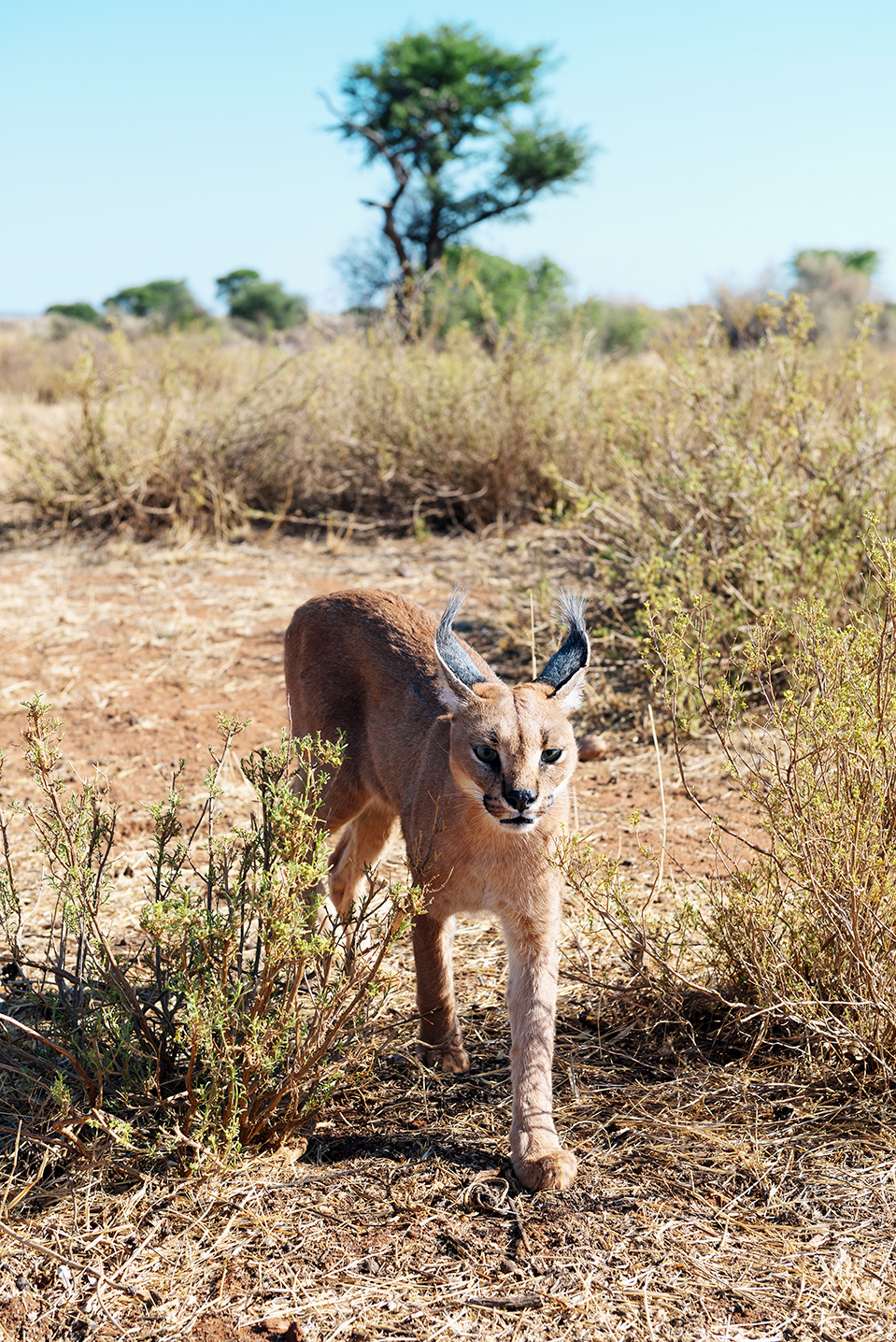
Leopard
Weight 30–60kg (female), 40–90kg (male); length 170–300cm Leopards rely on expert camouflage to stay hidden. During the day you might only spot one reclining in a tree, but at night there is no mistaking its bone-chilling groans. Best seen: Okavango Delta, Moremi Game Reserve (GR), Okonjima Nature Reserve (NR), Erindi Private Game Reserve (GR), Chobe National Park (NP).
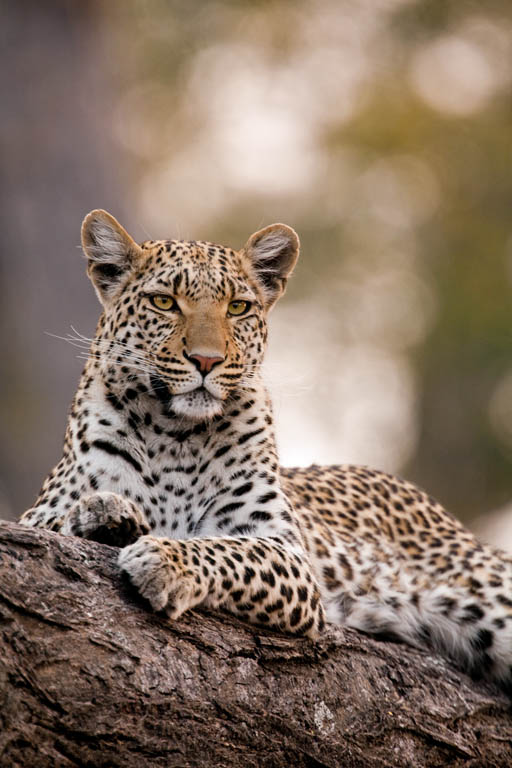
Lion
Weight 120–150kg (female), 150–225kg (male); length 210–275cm (female), 240–350cm (male) Africa’s most feared predators, lions are equipped with teeth that tear effortlessly through bone and tendon; taking down an animal as large as a bull giraffe. Each pride is based around generations of females that do the majority of hunting. Best seen: Chobe NP, Etosha NP, Moremi GR, Central Kalahari Game Reserve (GR).
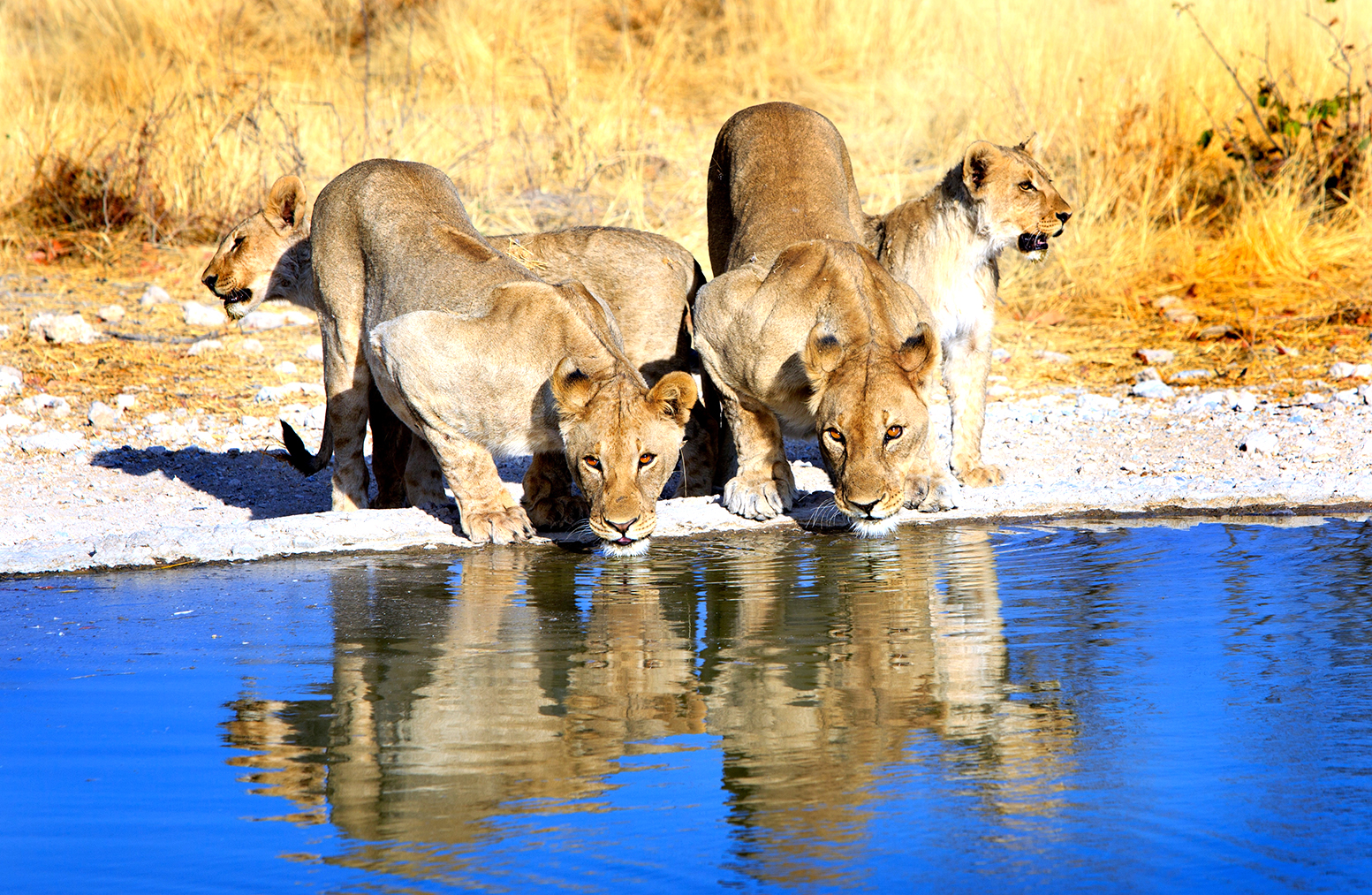
Cheetah
Weight 40–60kg; length 200–220cm A world-class sprinter, reaching speeds of 112km/h, the cheetah runs out of steam after 300m and must cool down for 30 minutes before hunting again. So adapted for hunting, it lacks the strength and teeth to defend its prey from attack by larger predators. Best seen: Etosha NP, Nxai Pans NP, Central Kalahari GR.
Black-footed Cat
Weight 1–2kg; length 40–60cm This pint-sized predator is one of the smallest cats in the world. Though only 25cm high, this nocturnal cat is a fearsome hunter that can leap six times its height. Best seen: Okavango Delta, Moremi GR.
Wildcat
Weight 3–6.5kg; length 65–100cm Found near villages, the wildcat looks like a common tabby and is the direct ancestor of our domesticated house cats. It’s best identified by its unmarked rufous ears and longish legs. Best seen: Okavango Delta, Moremi GR, Okonjima NR.
Primates
Botswana and Namibia are home to a mere three species of primates. Of these, only the Chacma baboon is common and widespread, but they are so fascinating to watch that they make up for the absence of other primates.
Vervet Monkey
Weight 4–8kg; length 90–140cm Found in northern Botswana and Namibia, vervets spend a lot of time on the ground, but always near to trees where they can escape from predators. Each troop is composed of females, while males fight each other for bragging rights and access to females. Best seen: Moremi GR, Okavango Delta, Etosha NP.
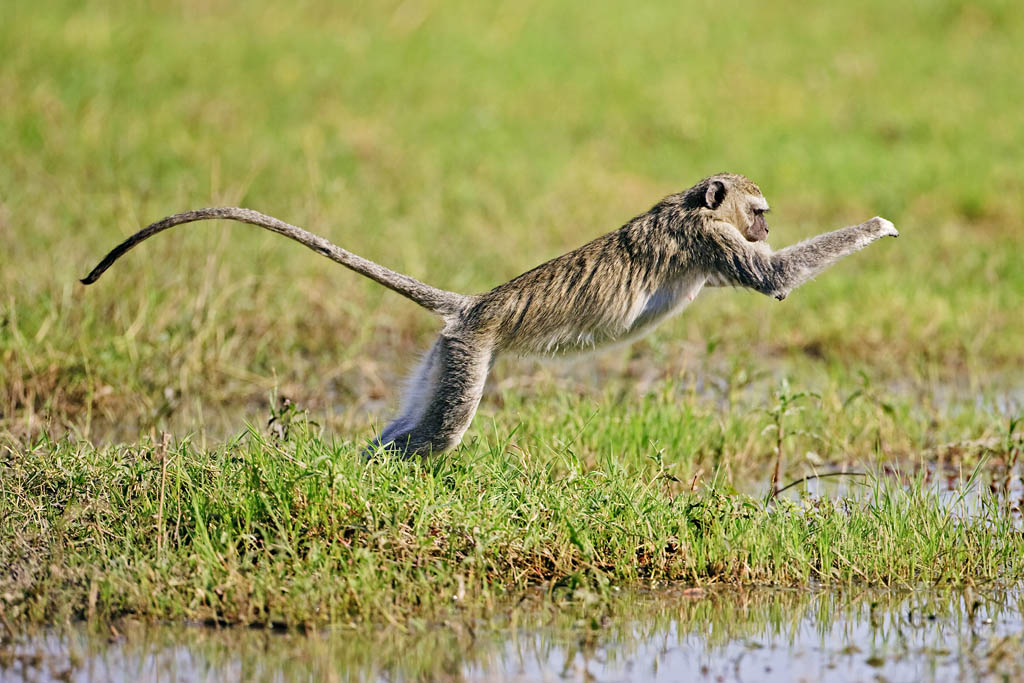
Lesser Galago
Weight 100–250g; length 40cm The nocturnal lesser galago (commonly called ‘bushbaby’) is phenomenally agile and acrobatic, making 5m-long leaps between trees and even leaping into the air to catch flying prey. In Botswana and Namibia they are only found in lush forested woodlands along the rivers of the north. Best seen: Okavango Delta, Moremi GR, Nkasa Rupara NP.
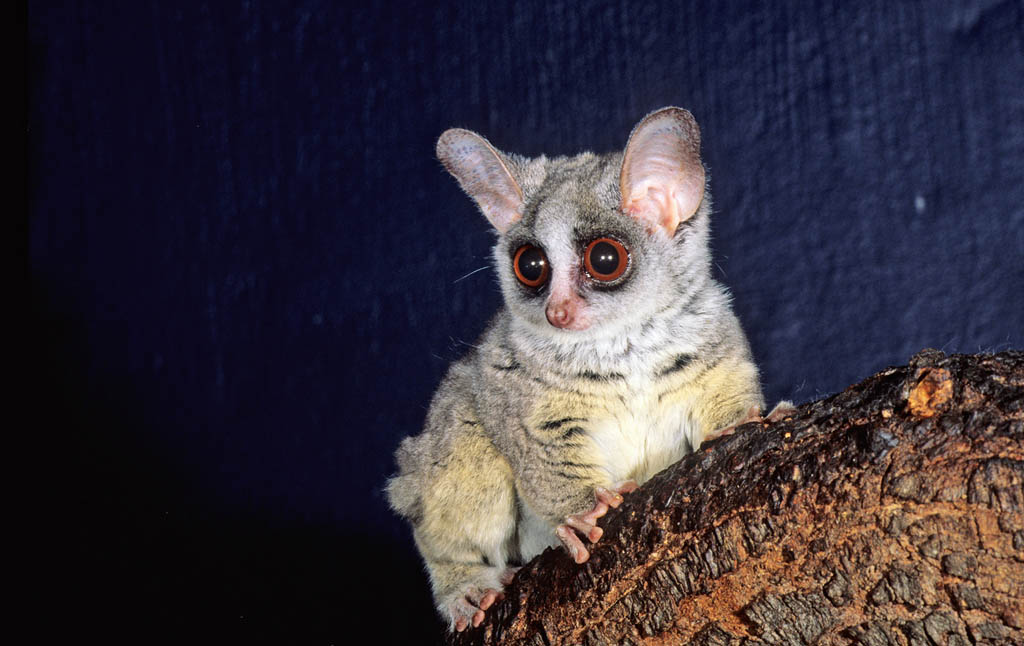
Chacma Baboon
Weight 12–30kg (female), 25–45kg (male); length 100–200cm Chacma baboons are worth watching because they have exceedingly complex social dynamics. See if you can spot signs of friendship, deception or deal-making within a troop. Best seen: Moremi GR, Linyanti, Bwabwata NP.
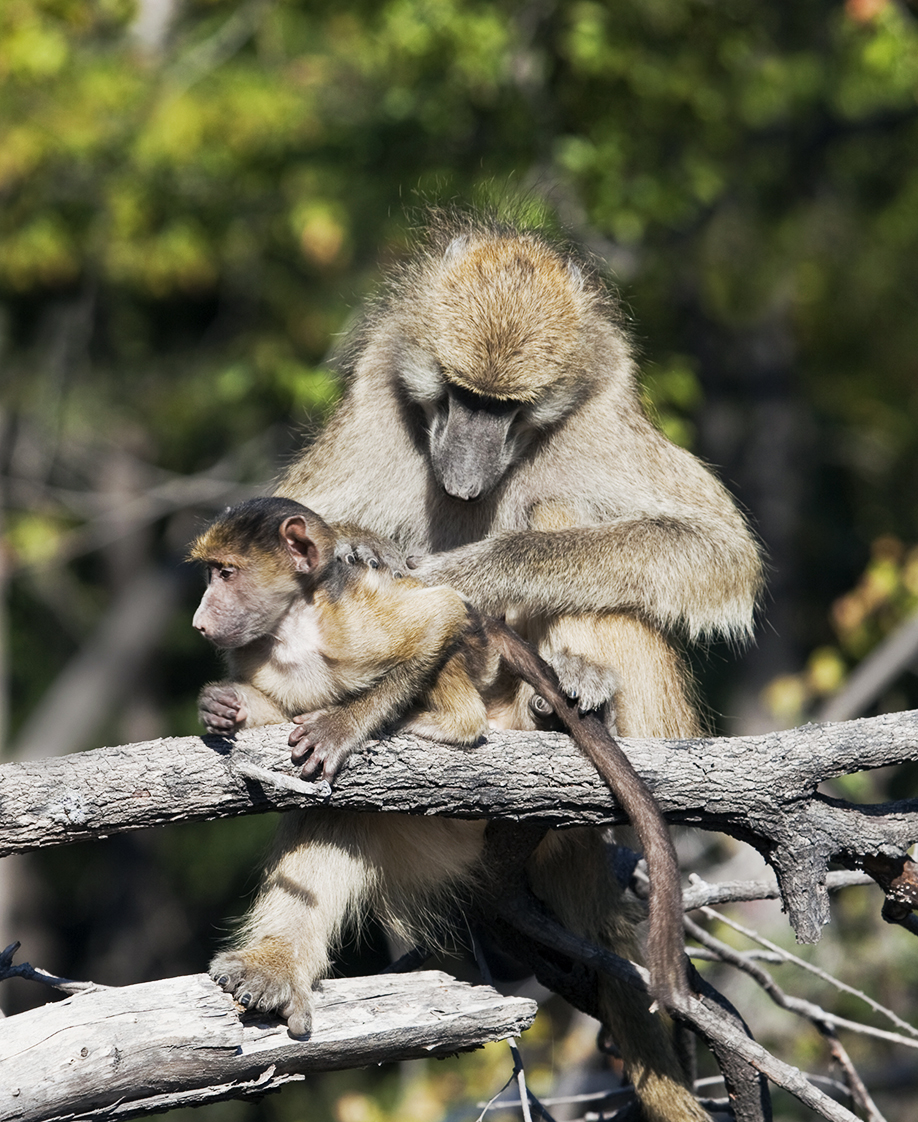
Cud-Chewing Mammals
Many of Africa’s ungulates (hoofed mammals) live in groups to protect themselves. Ungulates that chew cud and have horns are called bovines. Antelopes are particularly numerous, with over a dozen species in Botswana and Namibia.
Hartebeest
Weight 120–220kg; length 190–285cm The long face allows this short-necked antelope to reach down and graze while still looking up for predators. Best seen: Etosha NP, CKGR, Okavango Delta.
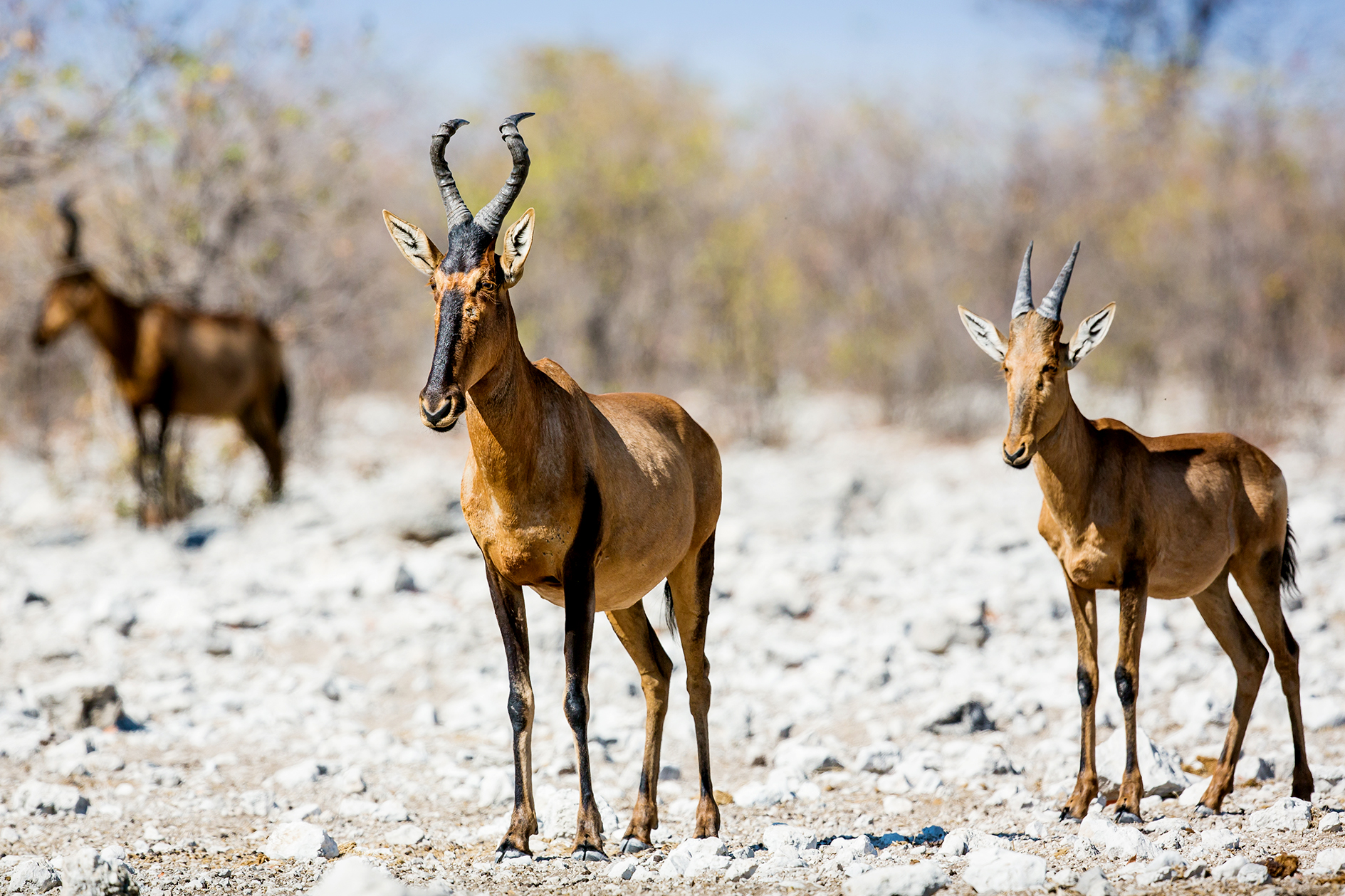
Gemsbok
Weight 180–240kg; length 230cm With straight 1m-long horns, this desert antelope can survive for months on scant water, derived from plants, and withstands temperatures that would kill other animals. Best seen: Central Kalahari GR, Khutse GR, Etosha NP, Namib-Naukluft NP.

African Buffalo (Cape Buffalo)
Weight 250–850kg; length 220–420cm The African buffalo is similar to a cow on steroids, with a fearsome set of curling horns. They’re usually docile, but if angry or injured can be extremely dangerous. Best seen: Moremi GR, Okavango Delta, Chobe NP, Bwabwata NP.
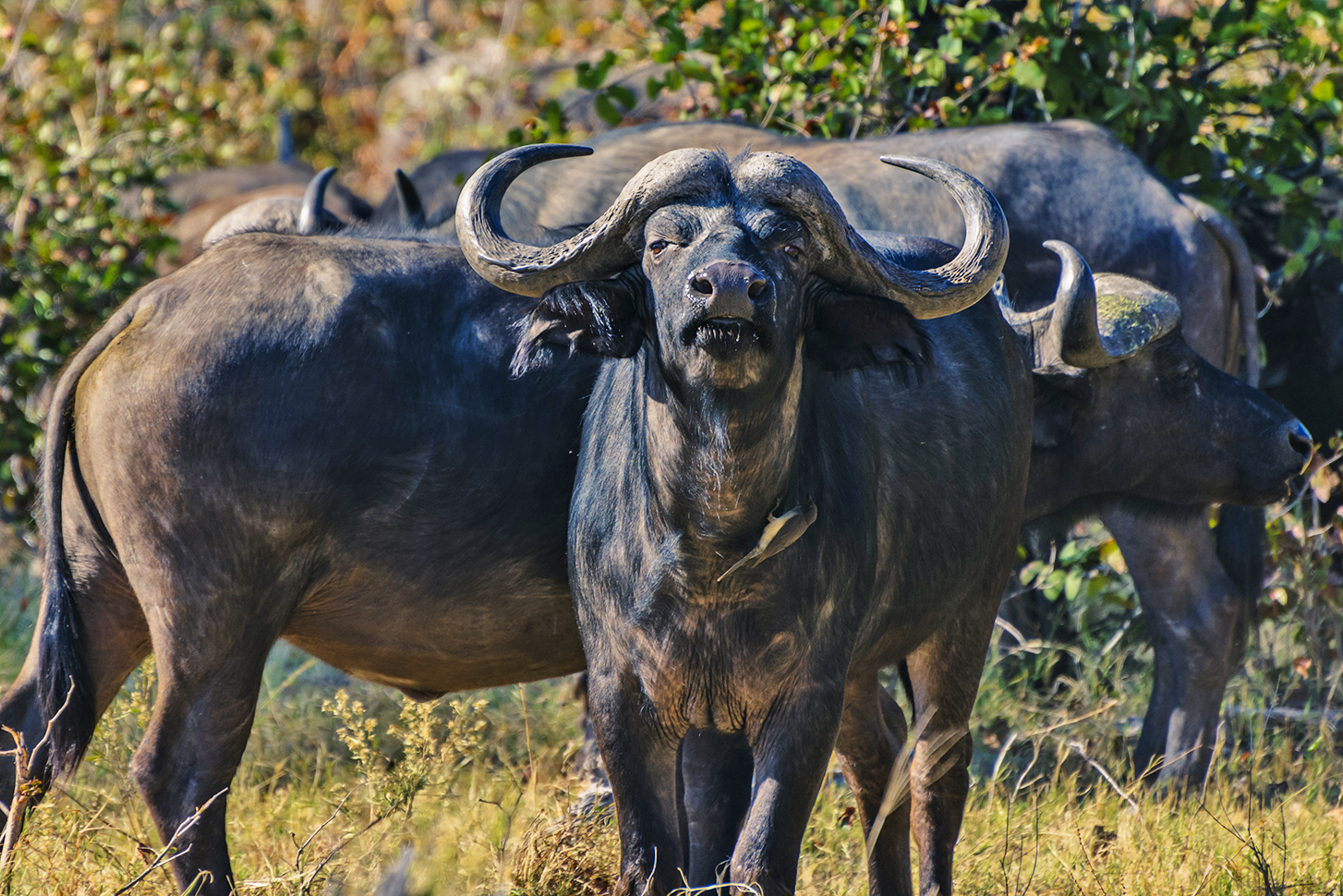
Impala
Weight 40–80kg; length 150–200cm Their prodigious capacity to reproduce means impalas reach great numbers quickly, outstripping predators’ ability to eat them all. Best seen: Namibia’s Etosha NP to see the unique black-faced impala, Okavango Delta, Moremi GR.
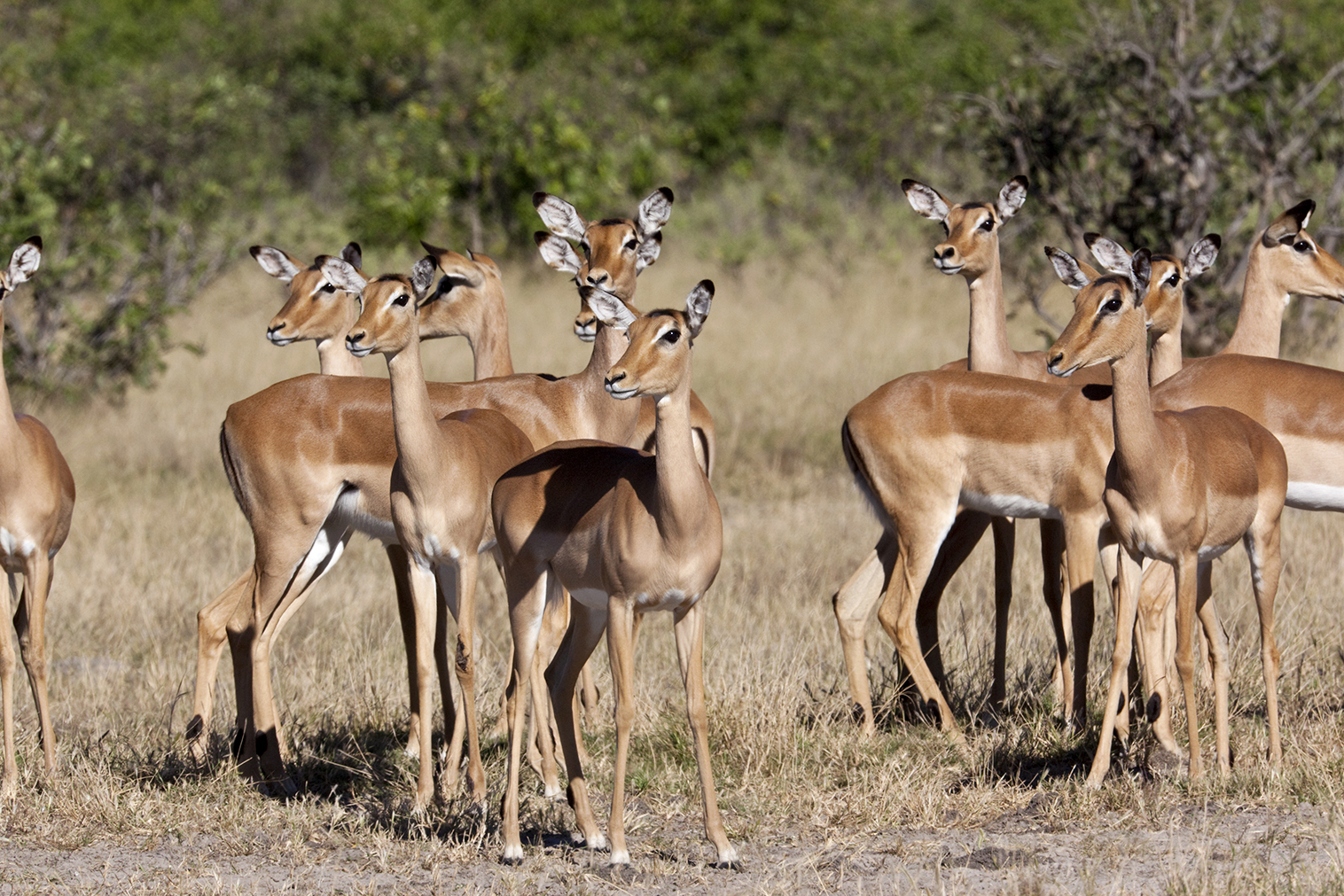
Wildebeest
Weight 140–290kg; length 230–340cm The wildebeest of northern Botswana are sedentary creatures, moving only when conditions fluctuate seasonally. Because they favour expansive views, wildebeest are in turn easily viewed themselves. Best seen: Etosha NP, Moremi GR, Okonjima NR.
Large Mammals
Apart from giraffes, these ungulates are not ruminants and can be seen over a much broader range of habitats than bovines. They have been in Africa for millions of years and are among the most successful mammals on the continent.
Black Rhinoceros
Weight 700–1400kg; length 350–450cm Once widespread and abundant, the rhino has been poached to the brink of extinction for its horn, worth more than gold. Best seen: Damaraland, Etosha NP Okaukuejo waterhole, Khama Rhino Sanctuary.

Mountain Zebra
Weight 230–380kg; length 260–300cm The unique mountain zebras of central Namibia differ from their savannah relatives in having unstriped bellies and rusty muzzles. Best seen: Erongo Mountains, Naukluft Mountains, Fish River Canyon.
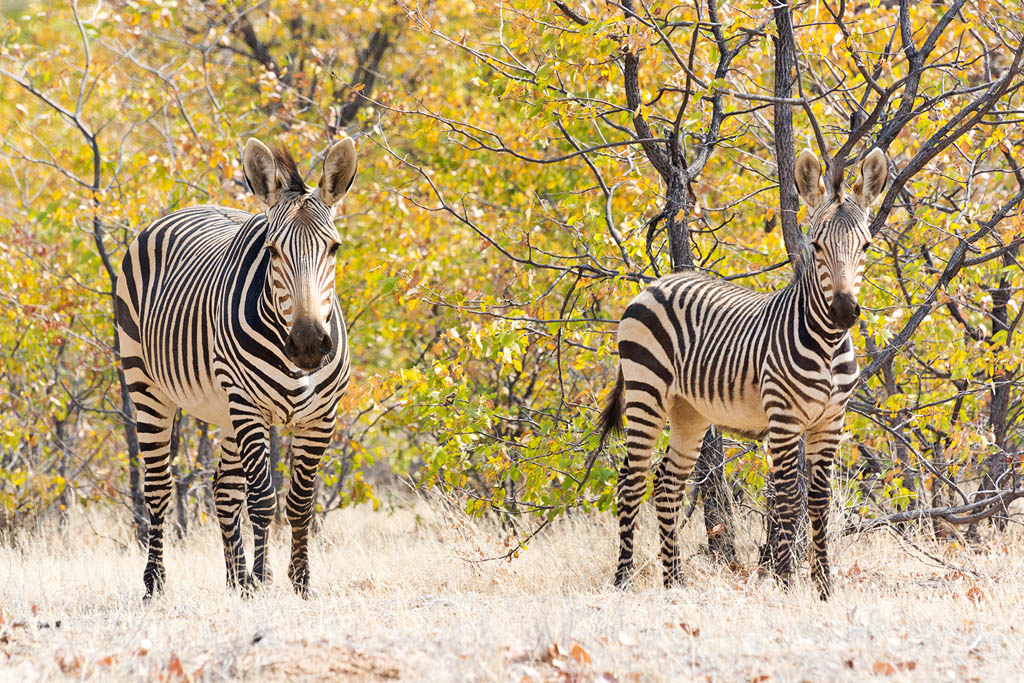
African Elephant
Weight 2200–3500kg (female), 4000–6300kg (male); height 2.4–3.4m (female), 3–4m (male) Elephants are abundant at Chobe NP, where up to 55,000 congregate in the lush wetlands. Even more interesting are the unique desert-loving elephants of Namibia. Best seen: Chobe NP, Okavango Delta, Moremi GR, Nkasa Rupara NP, Bwabwata NP, Damaraland.
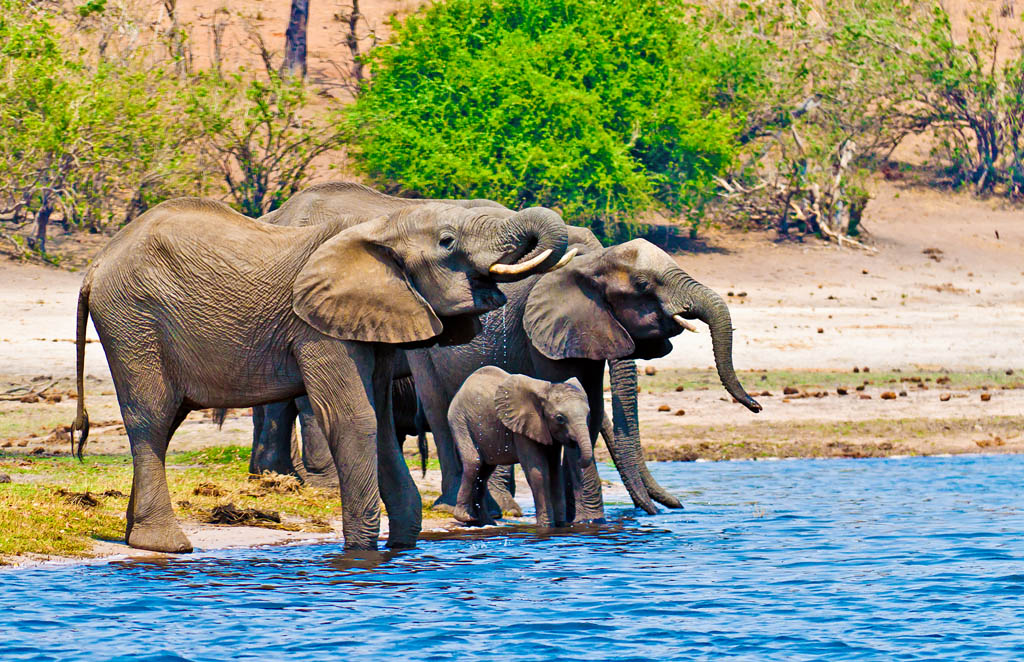
Hippopotamus
Weight 510–3200kg; length 320–400cm Hippos spend all their time in or very near water, and are tremendously ferocious and strong if provoked. Best seen: Okavango Delta, Moremi GR, Chobe NP, Bwabwat NP.
Giraffe
Weight 450–1200kg (female), 1800–2000kg (male); height 3.5–5.2m The 5m-tall giraffe does such a good job reaching up to high branches that stretching down to get a drink of water is difficult. Though they stroll along casually, they can outrun any predator. Best seen: Chobe NP, Etosha NP, Okavango Delta.
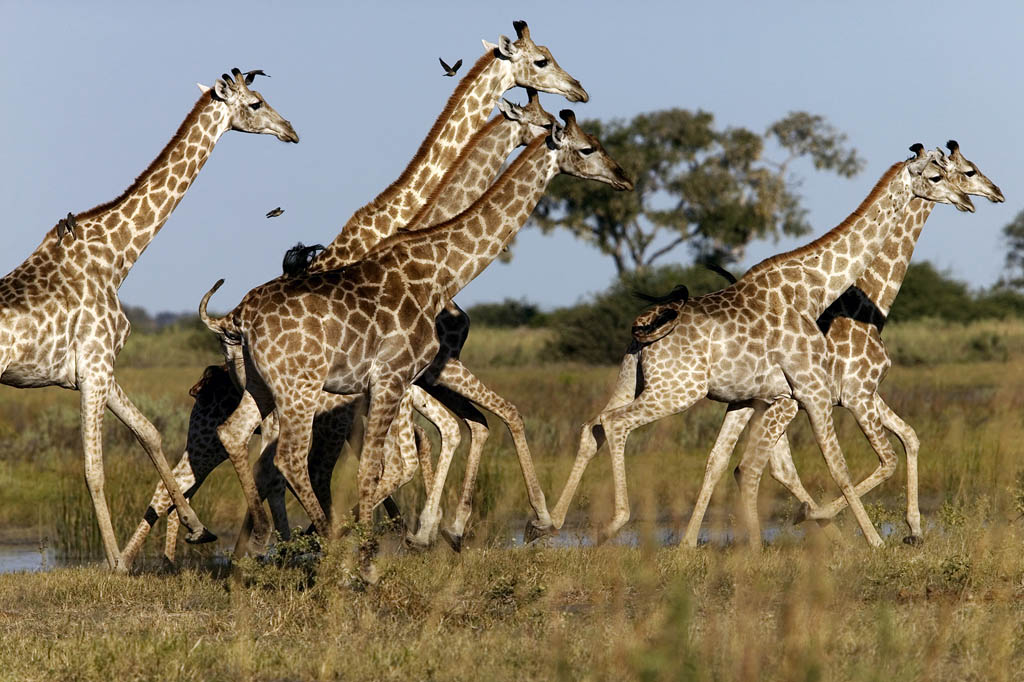
Carnivores
As well as the cats, Botswana and Namibia are home to a couple of dozen carnivores, ranging from slinky mongoose to highly social hunting dogs. All are linked in having ‘carnassial’ (slicing) teeth, but visitors may be more interested in witnessing their hunting prowess.
Bat-Eared Fox
Weight 3–5kg; length 70–100cm This animal has huge ears that it swivels in all directions to pick up the sounds of subterranean food like termites. Monogamous pairs of these social foxes will often mingle with other pairs and families when hunting. Best seen: Central Kalahari GR, Etosha NP, Khutse GR.

Meerkat
Weight 0.5–1kg; length 50cm The area’s several species of mongoose may be best represented by the meerkat (also known as a suricate). Spending much of their time standing up, if threatened they all spit and jump up and down together. Best seen: Makgadikgadi Pans, Kgalagadi Transfrontier Park.
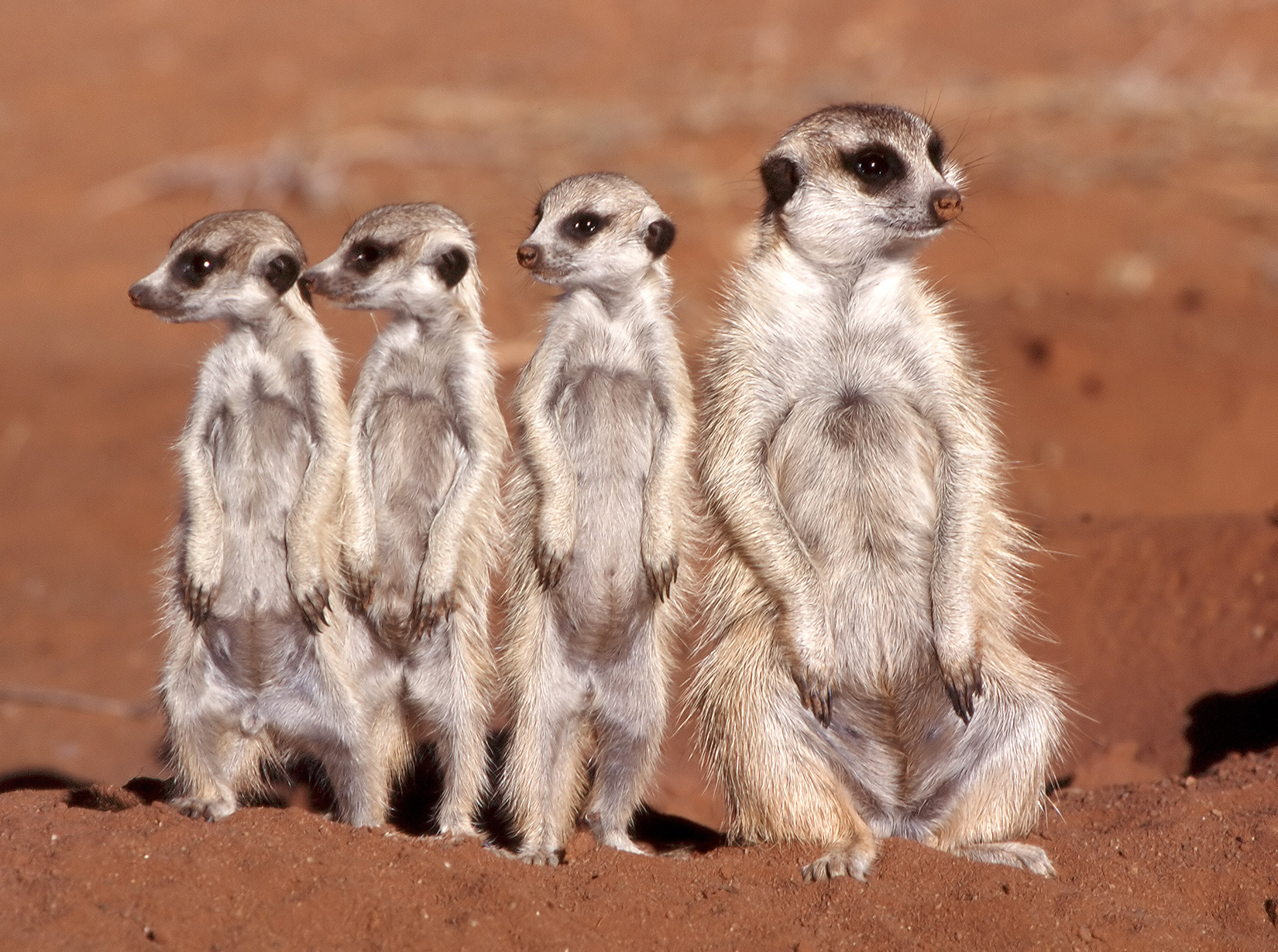
African Wild Dog
Weight 20–35kg; length 100–150cm Uniquely patterned, hunting dogs run in packs of 20 to 60. These highly social but endangered canids are incredibly efficient hunters. Best seen: Moremi GR, Linyanti, Okavango Delta, Bwabwata NP.
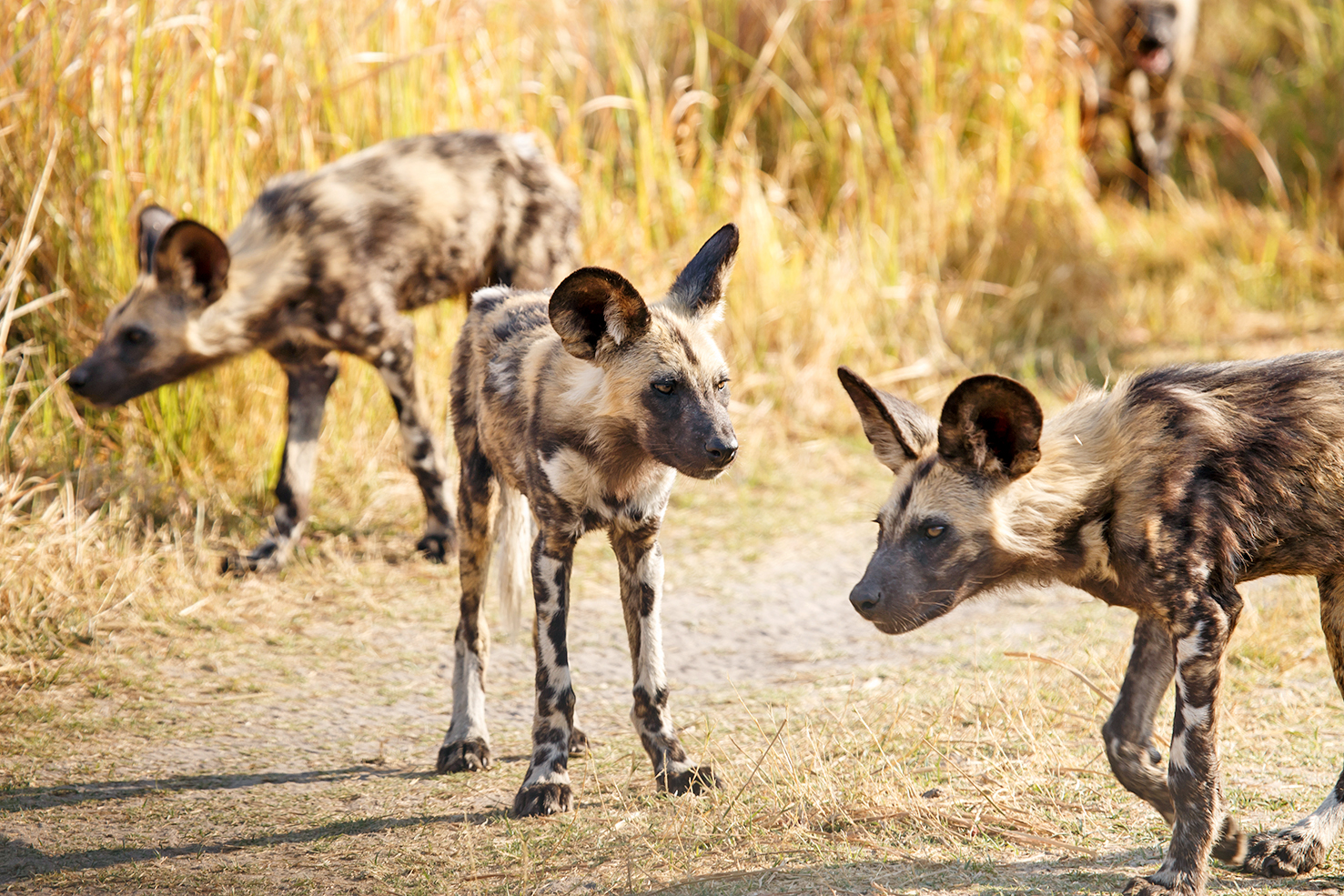
Cape Fur Seal
Weight 80kg (female), 350kg (male); length 120–200cm Several giant breeding colonies of seals are located on Namibia’s Skeleton Coast. Forced to gather in dense numbers as protection against marauding hyenas, these colonies are turbulent, noisy and exciting to watch. Best seen: Cape Cross Seal Reserve.
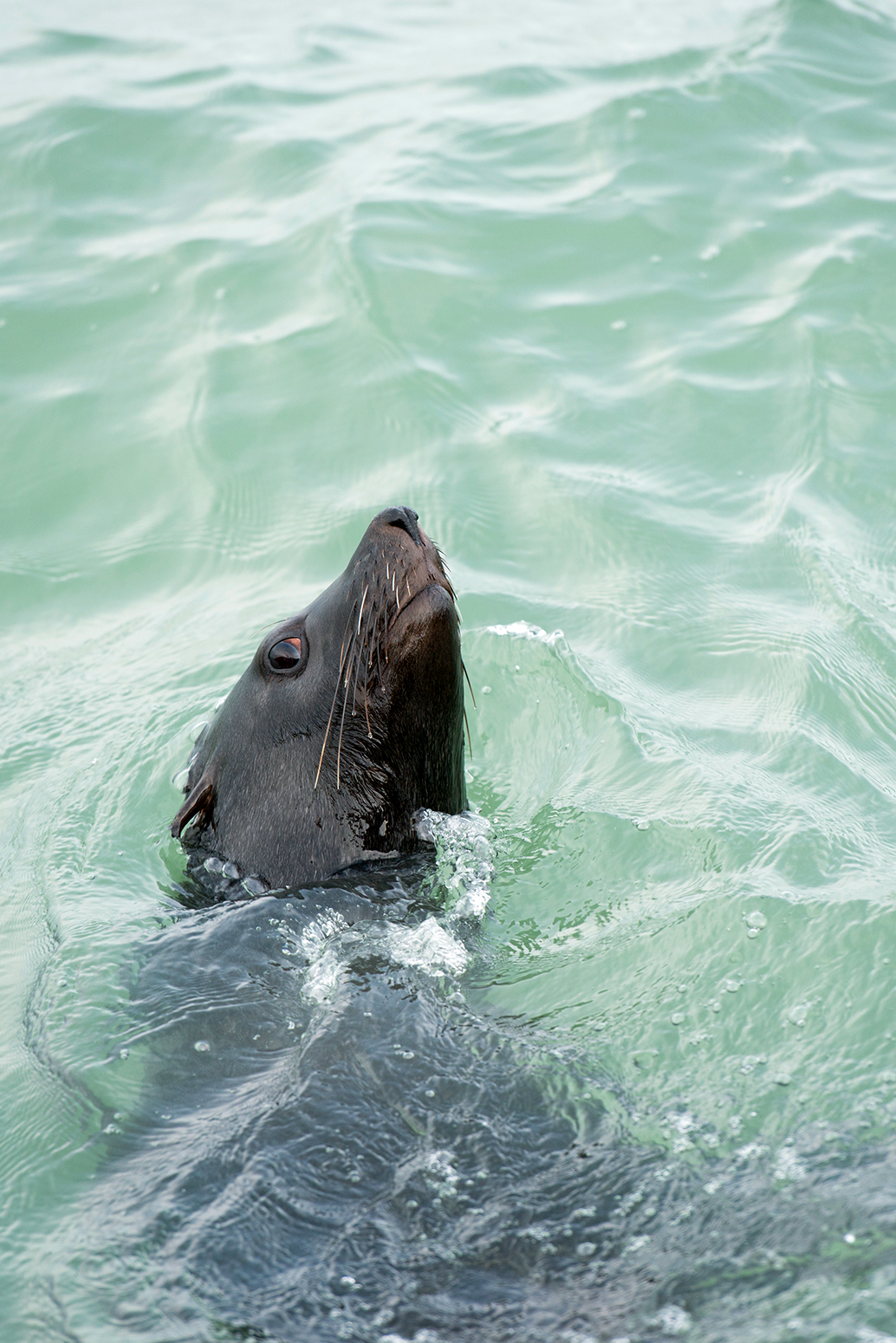
Spotted Hyena
Weight 40–90kg; length 125–215cm Living in packs ruled by females, these savage fighters use their bone-crushing jaws to disembowel prey or to do battle with lions. Best seen: Okavango Delta, Etosha NP, Moremi GR, Damaraland.
Birds of Prey
Botswana and Namibia are home to about 70 species of hawk, eagle, vulture and owl, so you are likely to see an incredible variety of birds of prey here. Look for them perching on trees, soaring high overhead or gathered around a carcass.
Lappet-Faced Vulture
Length 115cm Vultures mingle with predators around carcasses in Botswana and Namibia. Through sheer numbers, they compete for scraps of flesh and bone. The monstrous lappet-faced vulture gets its fill before other vultures move in. Best seen: Makgadigadi NP, Okavango Delta, Chobe NP.

Pale Chanting Goshawk
Length 55cm Small clusters of these slim grey raptors with red beaks and legs often perch low on bushes. Look closely because they are probably following some other small hunter like a honey badger. Best seen: Moremi GR, Etosha NP, Okavango Panhandle.

Bateleur
Length 60cm French for ‘tightrope-walker’, the name refers to its distinctive low-flying aerial acrobatics. In flight, look for its white wings and tailless appearance; at close range look for the bold colour pattern and scarlet face. Best seen: Okavango Delta, Kgalagadi Transfrontier Park, Moremi GR.

African Fish Eagle
Length 75cm With a wingspan over 2m, this replica of the American bald eagle hunts for fish around water, but it is most familiar for its loud ringing vocalisations that have become known as ‘the voice of Africa’. Best seen: Okavango Delta, Nkasa Rupara NP, Moremi GR, Bwabwata NP.
Secretary Bird
Length 100cm With the body of an eagle and the legs of a crane, the secretary bird towers 1.3m tall and walks up to 20km a day across the savannah in search of vipers, cobras and other snakes that it kills with lightning speed and agility. Best seen: Moremi GR, CKGR, Etosha NP.
Other Birds
Come to Botswana and Namibia prepared to see an astounding number of birds in every shape and colour. You may find them a pleasant diversion after a couple of days of staring at sleeping lions.
Lilac-Breasted Roller
Length 40cm This gorgeously coloured bird gets its name from the tendency to ‘roll’ from side to side in flight as a way of showing off its iridescent blues, purples and greens. Best seen: Everywhere! Okavango Panhandle, Moremi GR, Etosha NP, Chobe NP.

Cape Gannet
Length 85cm These crisply marked seabirds congregate by the thousands to catch fish with high-speed dives into the waves. Best seen: Cape Cross Seal Reserve, Skeleton Coast Park, Dorob NP.

Lesser Flamingo
Length 100cm Deep rose pink and gathering by the hundreds of thousands on shimmering salt lakes, the lesser flamingo creates one of Africa’s most dramatic wildlife spectacles. Best seen: Walvis Bay.
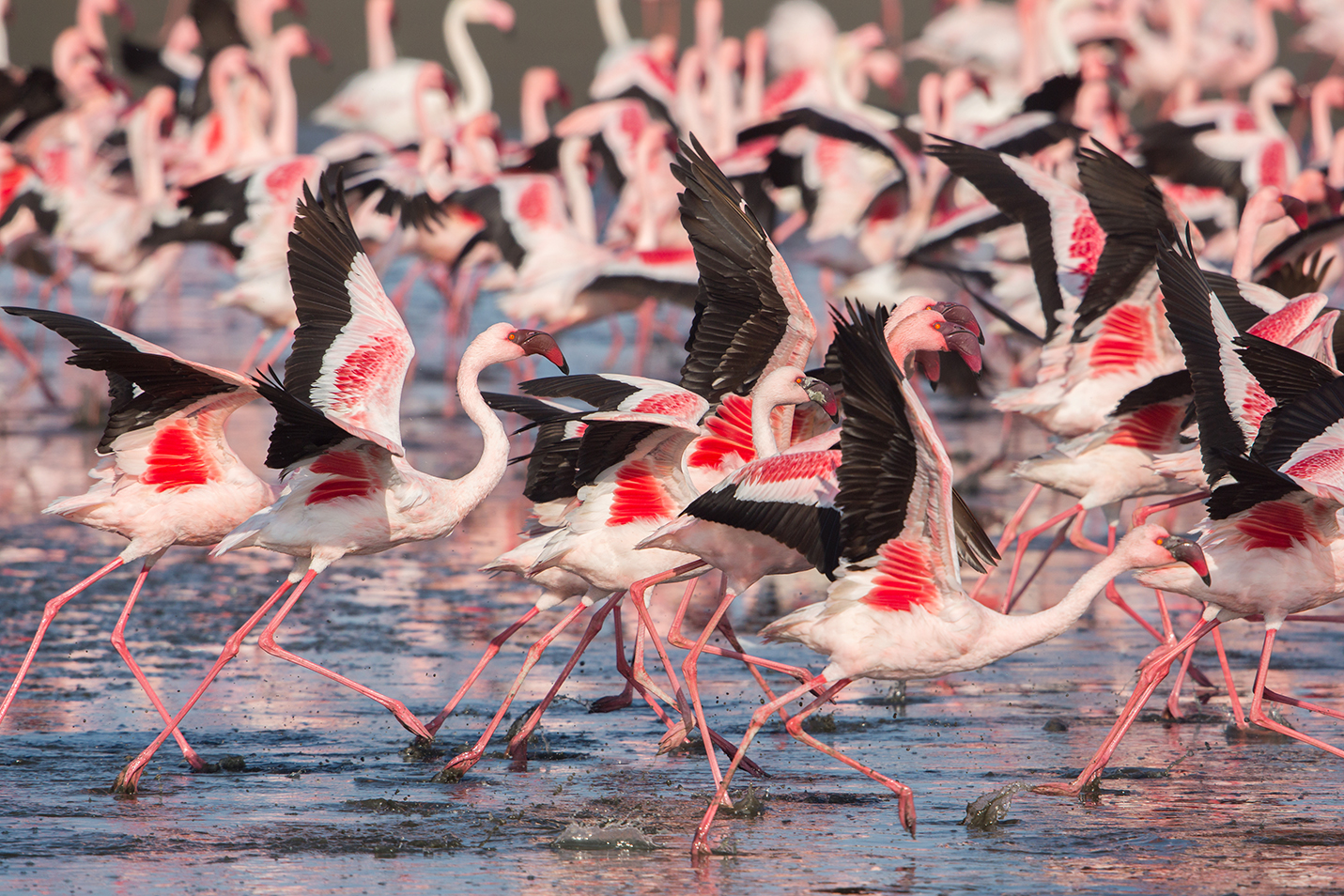
Ostrich
Length 200–270cm Weighing upwards of 130kg, these flightless birds escape predators by running away at 70km/h or lying flat on the ground to resemble a pile of dirt. Wild ostriches are still found in the Kalahari Desert. Best seen: CKGR, Etosha NP, Kgalagadi Transfrontier Park.
African Penguin
Length 60cm The African penguin got its former moniker (the jackass penguin) for its donkey-like call, part of the courtship displays given by the males. Some penguin colonies are ridiculously tame. Best seen: Namibian coast and on offshore islands.
Hamerkop
Length 60cm The hamerkop is a stork relative with an oddly crested, woodpecker-like head. Nicknamed the ‘hammerhead’, it is frequently observed hunting frogs and fish at the water’s edge. Look for its massive 2m-wide nests in nearby trees. Best seen: Okavango Panhandle, Moremi GR, Caprivi Strip.